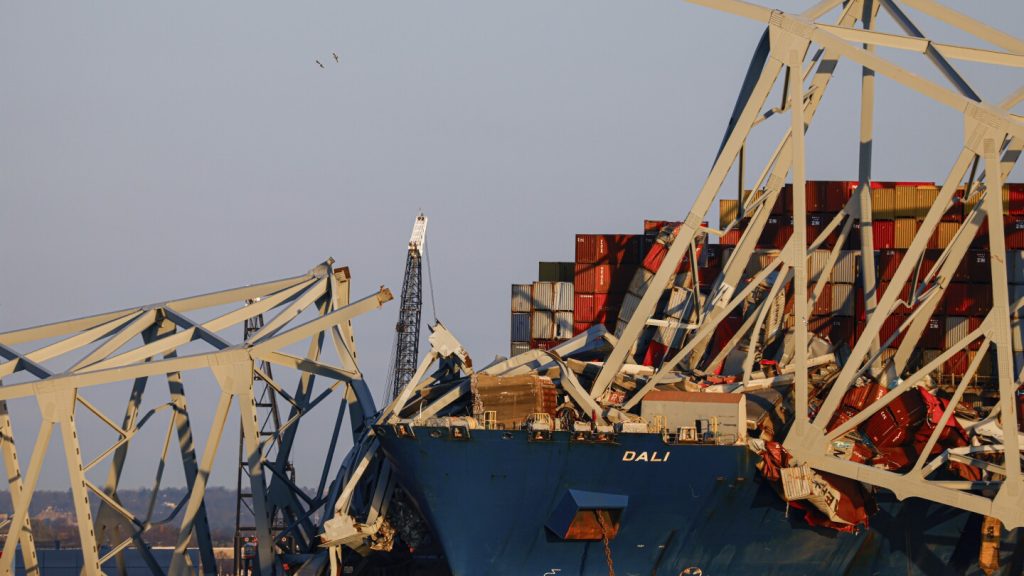The initial stages of a federal probe into the collapse of Baltimore’s Francis Scott Key Bridge are focused on the electrical power system of the container ship that caused the disaster. The National Transportation Safety Board is gathering data with assistance from Hyundai, the manufacturer of equipment in the ship’s engine room, to examine its circuit breakers. The ship experienced power issues moments before the crash, as shown in videos where its lights went out and came back on. Information from the vessel’s voyage data recorder is basic, so data from the engine room will be crucial for the investigation. Investigators are also looking into the bridge design and how it could be improved for better pier protection under current standards.
The container ship Dali was leaving Baltimore with cargo for Sri Lanka when it struck a supporting column of the bridge, causing it to collapse into the Patapsco River. Six members of a roadwork crew tragically lost their lives, with three bodies recovered and three still missing. Efforts are underway to remove sections of the fallen bridge and unload containers from the stationary Dali. A third temporary shipping channel is expected to open by late April, allowing more commercial traffic to access the port of Baltimore, which has been closed to maritime traffic since the collapse.
Federal safety investigators remain on the scene in Baltimore, conducting interviews with the ship’s pilots and crew members. NTSB Chair Jennifer Homendy testified at a U.S. Senate committee hearing, stating that a preliminary report on the crash will likely be released early next month. Investigators had laid out a timeline leading up to the crash, indicating it appeared to be an accident. Alarms sounded less than an hour after the Dali left port on the day of the incident, followed by steering commands and rudder orders. The ship lost all power while approaching the bridge, leading to a collision. Sound recordings indicated the ship was traveling at about 8 mph when it hit the bridge.
The NTSB’s focus on the electrical power system of the container ship and the design of the bridge highlight key areas of interest in the investigation. The tragic collapse of the Francis Scott Key Bridge has had significant impacts on maritime traffic in the port of Baltimore, with efforts underway to reopen channels for commercial ships. The recovery of bodies, the ongoing search for missing victims, and the removal of debris from the river are all part of the continued response to the disaster. As investigators gather more information and conduct interviews, the preliminary report on the crash is expected to shed light on the sequence of events leading to the tragic incident.
The testimony provided by Chair Jennifer Homendy at the U.S. Senate committee hearing underscores the seriousness of the investigation and the importance of determining the causes of the bridge collapse. The collaboration with Hyundai and other stakeholders to gather data from the ship’s engine room and examine circuit breakers demonstrates the thorough approach being taken by federal investigators. The release of the preliminary report next month will provide more insights into the circumstances surrounding the crash and potential areas for improved safety measures in the future. The impact of the collapse on the port of Baltimore and the families of the victims serves as a reminder of the importance of ensuring the safety and integrity of critical infrastructure for maritime operations.


